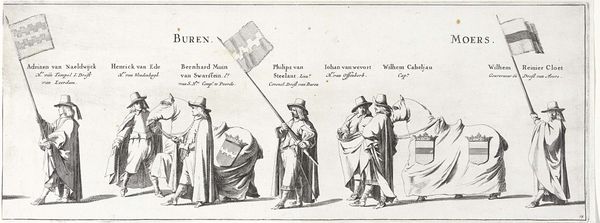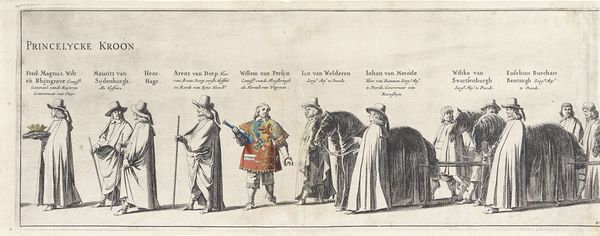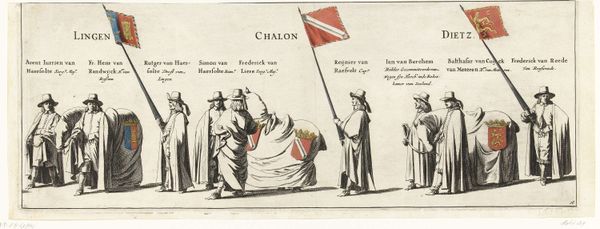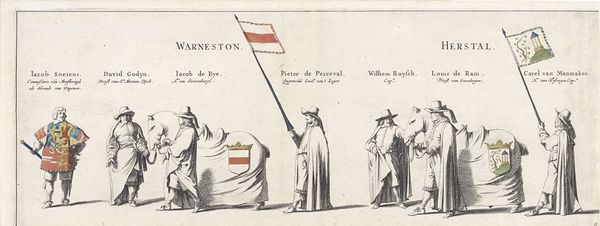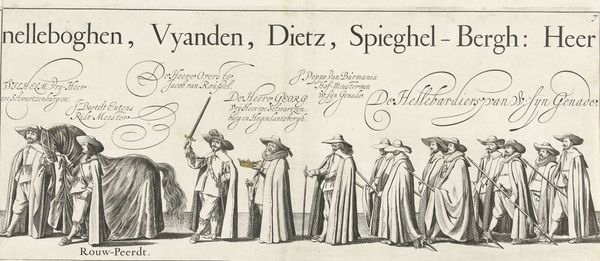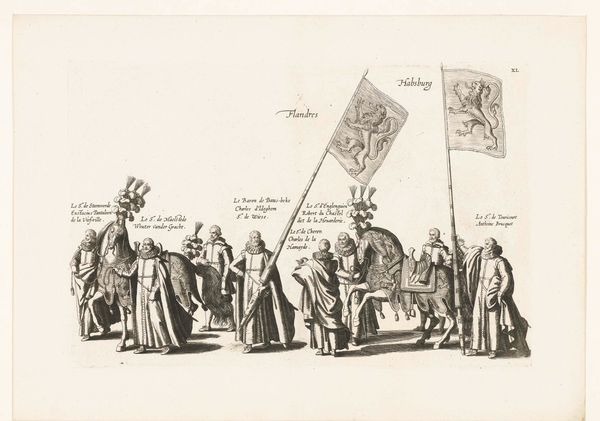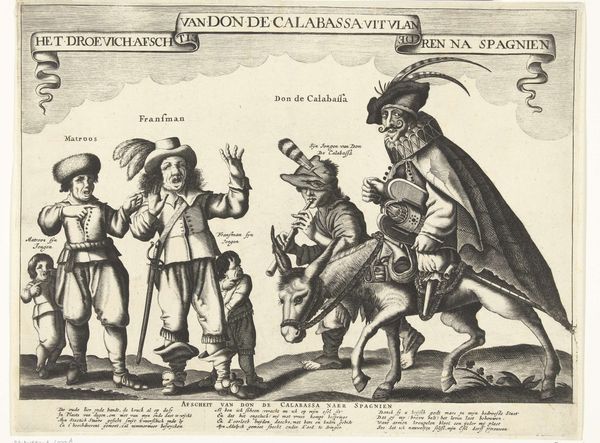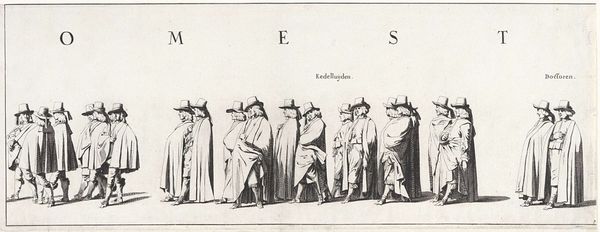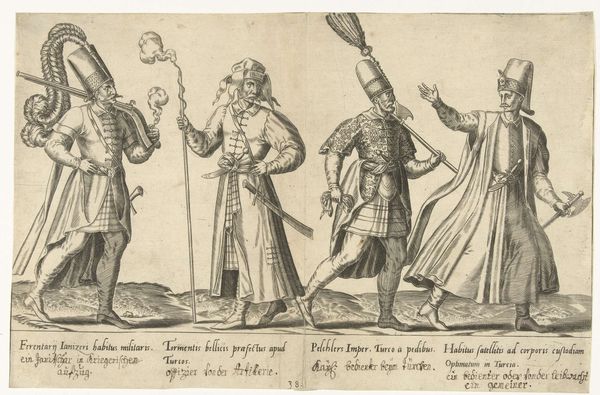
print, etching
#
baroque
#
dutch-golden-age
# print
#
etching
#
history-painting
Dimensions: height 206 mm, width 547 mm
Copyright: Rijks Museum: Open Domain
Curator: This print, dating from 1651, is entitled *The Funeral Procession of Frederick Henry, plate no. 12.* It's by Pieter Nolpe and immortalizes a Dutch Golden Age historical moment with precise etchings. I am struck by the formality, the procession itself. Editor: Yes, an overwhelming somber mood comes across despite it being a print. The way each figure is meticulously rendered makes me consider how much of statecraft is performative in such instances. Curator: It captures an elaborate display of mourning, laden with symbolic importance. Note how each section seems organized around place banners, marking a parade of allegiance, as each standard echoes lineage. Editor: I am more intrigued by what is obscured than what is overtly shown. What position did the individual towns occupy, or, were trying to achieve, in relation to the Oranje-Nassau family, who ruled as Stadtholders during that period? Curator: Nolpe masterfully communicates continuity and legacy here through these family crests— the banners aren’t merely decorative. Instead, the symbols signal something inherent within the lineage, reaching beyond the immediate grief. Editor: Absolutely, symbols have their place but I find that even public mourning must be examined in terms of social contracts, how such displays affect public policy and social expectations. The Dutch Republic was just formalizing as a nation-state during the period. The power plays must have been intense! Curator: That’s a modern lens though, wouldn't you agree? Perhaps the intent was less overtly strategic and more in line with honoring someone considered integral to their culture? Editor: And I ask, whose culture and at what price? Every emblem, every gesture served specific political ends, no matter how respectfully presented on the surface. We ought to look closely to what they signify, but also who is written out of the symbolic order, and consider what perspectives may be repressed through the act of enshrinement itself. Curator: True, viewing art history demands continual dialogue. Looking closely, I do wonder, however, at Nolpe's intention as the printmaker. Surely, he perceived these layers. Editor: The interplay of symbol and circumstance opens vital channels for critical thinking about the past—precisely why we must see it for the nuanced tapestry that it is.
Comments
No comments
Be the first to comment and join the conversation on the ultimate creative platform.
